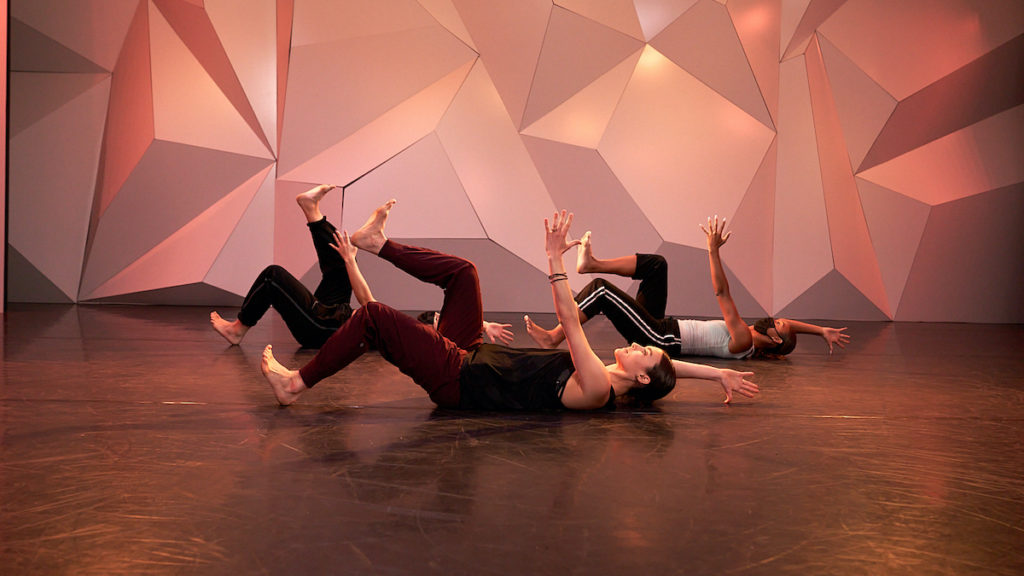With its emphasis on leg and torso strength and occasionally explosive choreography, contemporary dance can be as demanding physically as any modern athletic event. Dancers are required to train and stay in top shape to perform such rigorous movements for extended periods of time. And while a contemporary dance class isn’t quite the same thing as working on a full dance production, the amount of exertion can feel pretty exhausting in a relatively short amount of time, and the risk of injury for the unprepared student is quite real. Here are some tips on how to properly warm-up, so that you can keep up with anything that the instructor might send your way.
Fitness Comes First
Before you even step into a dance studio, it’s a good idea to assess your general physical fitness. Do you consider yourself to be in pretty good shape, or do you get a little winded going up that extra flight of stairs? Contemporary dance classes can definitely help you reach a higher level of fitness, but that’s usually not the student’s primary goal.
While most dance studios offer classes for people of all levels of ability and fitness, it doesn’t hurt to start a regular exercise routine before starting a contemporary dance class. A little jogging, walking, cycling, or swimming at least three times a week will go a long way towards building up your cardio, endurance, and general muscle strength.
Isolate and Operate
Because so much of contemporary dance involves a mixture of movement and balance, with explosive dynamic motions often accompanied by poses and kinetic minimalism, it’s important to have a wide range of control over the various parts of your body. One way to achieve this during your warm-up is with a series of exercises called body isolations. As the name suggests, these exercises involve isolating a specific part of your body and moving it without including the rest of yourself. Head rolls, hip rolls, and side-to-side shoulder and chest sways are all examples of body isolation exercises. A good tip is to talk to your instructor about which body isolation exercises they would suggest incorporating into your pre-dance routine.
Loosen Up
Just as important as body control is limberness and flexibility. A dancer’s flexibility is directly related to their available range of motion: The more flexible you are, the more movements you are capable of executing. This is why stretching is an essential part of any dancer’s warm-up. For contemporary dance students, pre-session stretches tend to focus mostly on the legs and hips, with an additional emphasis on the upper body in the form of back, neck, and shoulder stretches.
Squats, lunges, sideways leg lifts, butterflies, toe touches, and even splits (for advanced students) are all common stretching exercises designed to increase your hip and leg flexibility. A good way to work through your stretching exercises is with a partner or even in a group. This allows everyone to recognize various levels of flexibility, and to set personal goals which can be encouraged by your fellow dancers.
Feet, Meet Floor
To prepare yourself for the big and dynamic movements of a contemporary dance class, you should get familiar with something called floorwork. Every discipline of dance has its own set of moves and motions which can generally be referred to as floorwork, and contemporary dance is no different. In the simplest terms possible, floorwork is practicing what your body–particularly your feet–is going to be doing on the dancefloor.
With contemporary dance, this can mean movements borrowed from ballet like the tendu and the plié, performed with or without the assistance of a barre, as well as kicks, leaps, and perhaps even a grand jeté. There are many levels of floorwork, from poses and motions literally performed on the floor to the more common upright maneuvers. The general idea of floorwork is to redefine your relationship with gravity as not just one of material necessity, but one of grace. Floorwork helps the dancer develop an awareness of their amount of control regarding the inescapable nature of gravity, and in doing so creates an emphasis on not just a motion, but the quality of a motion.
Basically, floorwork helps you look good while you perform. A great tip for getting better at floorwork is to use a mirror or record yourself so you can watch it back later. This allows you to register instant feedback from the only person responsible for your moves: Yourself.

You can train with contemporary choreographers like Teddy Forance and Kathryn McCormick in CLI Studios’ on-demand library.

